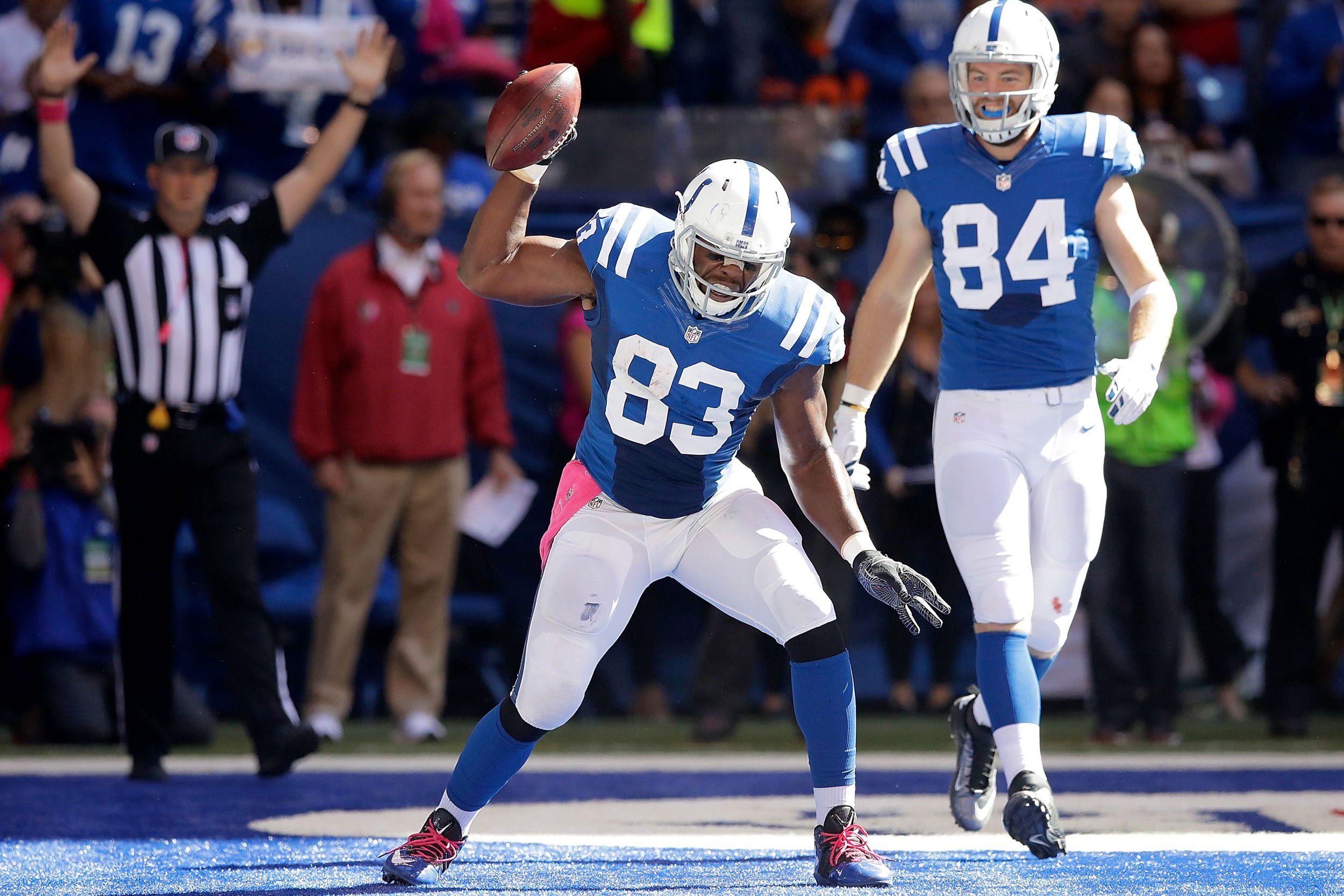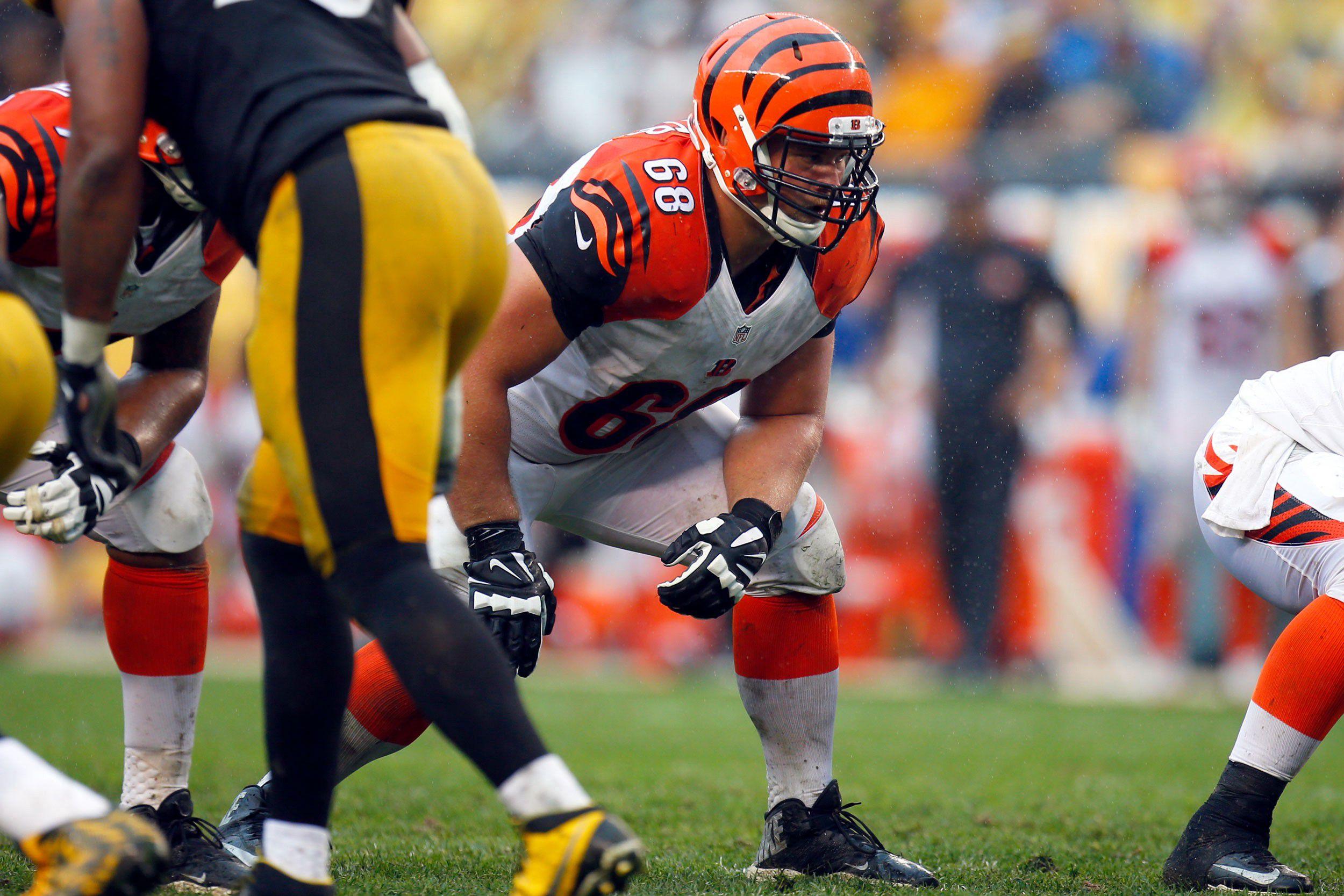As frenzied as some thought this year’s version of NFL free agency might be, I don’t think anyone imagined this. After the market officially opened on Thursday, the speed of the activity was enough to cause whiplash.
The signings, the rumors, and the truly shocking moments seemed ceaseless. It was one of the nuttier days in the history of the league (and certainly in the history of NFL Twitter). To help sort through the madness, I’ve pinpointed five things that have defined the 2017 market so far.
1. The Browns’ trade involving Brock Osweiler may be the most fascinating deal in NFL history — and one that will be hard to replicate. Since Sashi Brown and Paul DePodesta took over the Cleveland front office in January 2016, the Browns have done everything they can to amass as many draft picks as possible. Last year, that involved trading down from the no. 2 overall selection and collecting a boatload of assets in the process. On Thursday, Brown and DePodesta took this pursuit to an entirely different level.
By trading a fourth-round pick to the Texans for quarterback Brock Osweiler, a 2018 second-rounder, and a 2017 sixth-rounder, Cleveland essentially used $16 million (Osweiler’s cap hit in 2017) to add another second-round pick to the war chest it already has. This is the type of deal that’s commonplace in the NBA but virtually unheard of in the NFL, in part because of how cash-strapped most organizations around the league usually are and in part because of how rarely non-guaranteed contracts are so onerous. With Osweiler and the Texans, Cleveland found the rare situation in which a team needed to get out from under a deal in a hurry. The Browns were eager to oblige.
With $102 million in cap space entering free agency, the Browns had more money than they knew what to do with. Devoting some of it to accrue yet another high-round draft pick is both a shrewd use of resources and further proof that the Cleveland front office will do anything in its power to find value. The Browns had already stockpiled enough picks to make a run at trading for Patriots backup QB Jimmy Garoppolo; having the ability to throw an extra second-rounder into negotiations certainly can’t hurt their cause. Cleveland can’t just sign Garoppolo, but by making this trade for Osweiler (who likely doesn’t factor into the team’s plans at quarterback whatsoever, in 2017 or beyond), it used its abundance of cap space to make any potential deal more appealing. Paying $16 million is a steep price for a second-round pick — and since teams are able to roll over cap room, it’s not as if any portion of that $102 million that goes unspent would be wasted — but it’s clear that the Browns had reached a financial point where they were willing to try something creative.
For the Texans, this trade is a godsend. They will pay the $9 million in bonuses that Osweiler is due this season, and that’s it. The move clears almost $10 million off the team’s cap, rids it of the dark cloud that the Osweiler mistake had become, and gives Houston a better shot of landing Tony Romo if and when he’s made available by the Cowboys. Both teams should be thrilled, and it’s not often that we can say that about an NFL trade. Then again, this isn’t like any trade we’ve ever seen.
2. There’s a reason Bill Belichick sits on the NFL’s version of the Iron Throne, and it’s because he’ll use every possible avenue to improve his team. Before the Browns shook up the football world, the Pats had clearly been the most interesting team in free agency. New England made its first move by agreeing to deal a fourth-round pick to Indianapolis for tight end Dwayne Allen (and a sixth-rounder) earlier in the week. Injuries and inconsistency have plagued Allen during his career with the Colts, but if he stays healthy he could be the perfect addition to the Patriots offense.

Allen is a flexible piece who can line up all over the formation, including in the backfield, and gives New England another capable blocker among its skill-position players as well as a receiving option who can attack defenses in a variety of ways. Martellus Bennett is an excellent blocker in his own right, but most of his work for the Patriots last season came as a standard in-line tight end. Pairing Allen with Rob Gronkowski gives New England its most versatile tandem at the position since 2012.
Somehow, though, acquiring Allen isn’t even the biggest trade splash the Patriots appear willing to make in their receiving corps. New England reportedly offered the Saints the 32nd overall pick for wideout Brandin Cooks, and in a wilder scenario, ESPN’s Dianna Russini reported that the two teams were discussing a deal that would send cornerback Malcolm Butler to New Orleans in exchange for Cooks.
Player-for-player trades are rare in the NFL. The most famous one in recent memory involved Denver shipping running back Clinton Portis to Washington in exchange for cornerback Champ Bailey and a 2004 second-round pick. More recently, the Eagles and Bills sent shockwaves across the league with a swap of running back LeSean McCoy and linebacker Kiko Alonso in 2015. These types of trades don’t happen very often, which makes rumors of one all the more noteworthy.
It would make sense that New England would be open to dealing Butler, who’s a restricted free agent, rather than negotiating an extension or matching a deal that he gets from another team. Cooks’s contract ($2.7 million this season plus a fifth-year option that will remain well under market value) would give New England two years of a cost-controlled player and allow it to avoid paying up for Butler.
The idea of trading their no. 1 cornerback became even more palatable to the Patriots front office after it doled out a monster deal to former Bills corner Stephon Gilmore. The $40 million guaranteed in Gilmore’s contract is the most at his position, and it represents a rare New England foray into high-priced free agency. Yet at this point, nothing this team does in the interest of bettering its roster should come as a shock.


3. The wide receivers went fast, and there’s a lot to unpack in examining their deals. When former Bears star Alshon Jeffery inked a one-year, $14 million contract with Philadelphia on Thursday afternoon, it meant that the entire top tier of free-agent wideouts was already off the market. Coming off a suspension-shortened 2016 campaign, the 27-year-old Jeffery signed a prove-it deal with the hopes of fully cashing in next offseason. His signing amounts to a relatively low-risk move for the Eagles, who get a top-flight playmaker with no long-term commitment.
There were few more glaring holes in the league last fall than Philly’s void at wide receiver, so it wasn’t surprising to see the Eagles keep pursuing Jeffery even after bringing in Torrey Smith on a three-year, $15 million deal. Smith is mostly limited to being a deep-ball threat, but with just $500,000 guaranteed in his contract, he could emerge as a bargain. Smith’s ability to stretch the field complements Jeffery’s talent for making contested catches in traffic; adding the pair to Philly’s receiving corps transforms this offense ahead of quarterback Carson Wentz’s second season.
Outside of Philadelphia, though, there were no receiver bargains to be found. Every other wideout at the top of the market secured a sizable, multiyear deal in a similar range. DeSean Jackson’s three-year, $35 million deal (with $20 million guaranteed) from the Buccaneers is about what he was projected to haul in, and for a team that was in desperate need of a secondary receiving threat (in addition to Mike Evans), it’s money well spent. The same can be said about the Dolphins and speedster Kenny Stills, who got a four-year, $32 million deal with $20 million guaranteed.
The Stills contract may seem like a hefty price to pay for a player whose performance has fluctuated throughout his young career, but he’s still just 24. And for Miami, being able to lock up a player entering his prime rather than one exiting it is a rarity in free agency. Especially compared to some of the other deals handed to receivers, I have no problem with the Dolphins offering Stills that kind of money. When Kenny Britt (who was very good for Los Angeles last fall but is 28 years old and has a single season with at least 50 catches) gets virtually an identical deal from Cleveland and Robert Woods gets $15 million guaranteed from the Rams, the Stills deal feels perfectly reasonable in this market.
4. Offensive guard might have been the strongest position on the free-agent market, and players promptly cashed in. Even before the Osweiler trade, the Browns had made plenty of noise. By inking left guard Joel Bitonio to an extension worth more than $23 million guaranteed and signing onetime Bengals first-round pick Kevin Zeitler to a five-year, $60 million deal with $31.5 million guaranteed, the Browns now have two of the three highest-paid guards in the league. It’s a message that Cleveland is set on building its offense through its line, following the model that teams like Dallas, Oakland, and Tennessee have used to varying degrees of success.

Zeitler was always going to get paid given the amount of cap space many teams had, but it’s still somewhat surprising that his deal shattered the previous market at the position. And while it won’t get nearly as much ink, the Browns’ signing of former Packers center J.C. Tretter to a three-year, $16.8 million deal is excellent value. In one day, the Browns built their line into one that could rank among football’s best.
The Saints got in on the action, too. By signing former Lions guard Larry Warford, New Orleans now boasts a starting unit with Terron Armstead, Andrus Peat, Max Unger, Warford, and Zach Strief. That group could be downright dominant next fall. The other top guard who signed Thursday, Ronald Leary, walks into a less certain situation in Denver and should bolster a line that badly needs reinforcements.
There was plenty of guard help to be found in this year’s free-agent class. Every team that landed one of these guys should be better off for it.
5. The market factors in play led to some absurd deals for offensive tackles. If you want to hear some genuine bewilderment, fast-forward to the 38-minute mark of Thursday’s Ringer NFL Show. As Kevin Clark, Danny Kelly, and I were recording that podcast, news broke that the Panthers were handing a five-year, $55.5 million contract to former Vikings left tackle Matt Kalil. I reacted with a combination of anger and confusion that nearly knocked me out of my chair.
That type of deal for Kalil, who was equal parts ineffective and injured last season, makes absolutely no sense — until you survey what else was available at left tackle. The options were limited aside from Andrew Whitworth, and heading into a draft that lacks much high-end talent at the position, teams desperate for tackle help had to shell out deals that seem flat-out nuts. Relative to the $25 million guaranteed that the Panthers gave Kalil, the deal that Russell Okung secured from the Chargers (four years, $53 million with $25 million guaranteed) seems almost sensible.